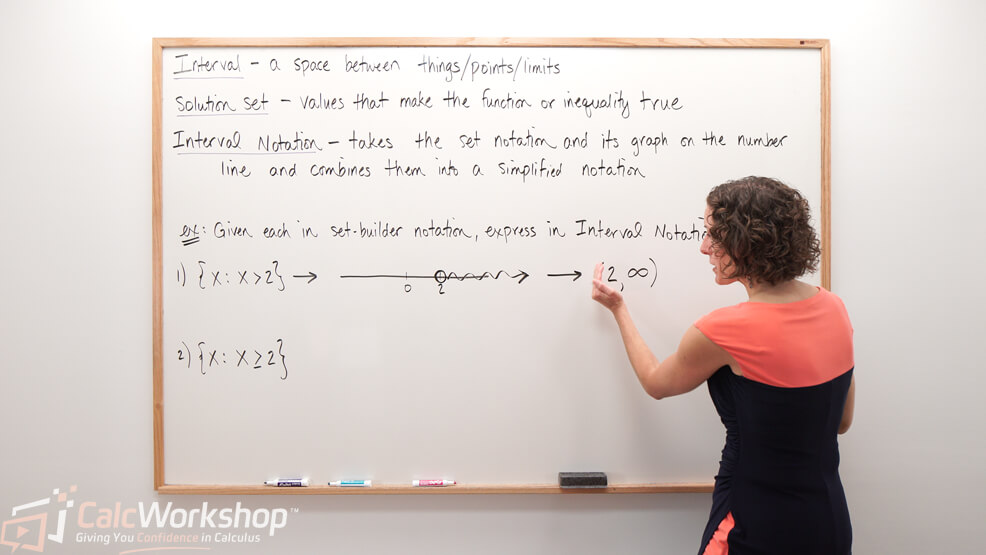In today’s lesson you’re going learn how to write in interval notation.

In addition, you’re going to see how it’s used to represent the domain and range of a function in a simplified and beautiful way.
Let’s get started!
Trigonometry is the branch of mathematics that deals with the relationship between the sides and angles of triangles, as well as relations and functions.
Consider the Distance Formula and the Pythagorean Theorem.
Both allow us to find the distance between two points and are equally useful in our study of triangles and functions.
But what is a function?
A function is a relation (set of ordered pairs) where no two orders pairs have the same first element.
What does this mean?
It means that a function is an equation where each and every x value is different and doesn’t repeat.
How is this useful?
If we know what values to plug in for x, then we can understand the entirety of our function (equation). In other words, we can represent our function in terms of its Domain and Range.
So how do we represent a functions Domain and Range?
Two ways:
- Set Builder Notation
- Interval Notation
When we first encountered Domain and Range, we used inequalities to represent the values for which x and y could be.
An inequality allows us to compare two expressions by indicating one is greater than, greater than or equal to, less than, or less than or equal to, another. In fact, as Cool Math nicely explains, we use intervals to help us identify properties that every member of our relation or set must satisfy.
But there is a simpler way!
What is Interval Notation?
Interval notation combines inequality, or set notation, with its graph, and allows us to accurately express an interval with easy to understand symbols.
Why should we care?
In advanced mathematics, interval notation is the preferred method of representing domain and range and is cleaner and easier to use and interpret. Cool Math agrees – Interval Notation is just a lot simpler.
In this lesson we are going to explore all of these concepts:
- Distance Formula
- Pythagorean Theorem
- Relations
- Functions
- Domain
- Range
- Set Notation
- Interval Notation
In doing so, we will create a firm foundation for our journey through Trigonometry and Math Analysis.
Worksheets
- Interval Notation Worksheet: Practice your skills by graphing inequalities using set builder notation and interval notation. This handout includes 12 practice problems.
- Cheat Sheet: Learn the differences between set builder notation vs interval notation.
Video – Lesson & Examples
1 hr 8 min
- Introduction to trigonometry
- 00:00:50 – Trig review of pythagorean theorem and distance formula
- 00:06:09 – How to calculate the distance between two points?
- 00:12:39 – Overview of relations, functions, domain, and range
- 00:20:00 – How to describe a function?
- 00:25:38 – Overview of intervals, solution sets, interval notations
- 00:32:23 – Given set-builder notation, express in interval notation (10 Examples)
- 00:50:37 – Give the domain and range and determine if it’s a function (5 Examples)
Get access to all the courses and over 450 HD videos with your subscription
Monthly and Yearly Plans Available
Still wondering if CalcWorkshop is right for you?
Take a Tour and find out how a membership can take the struggle out of learning math.